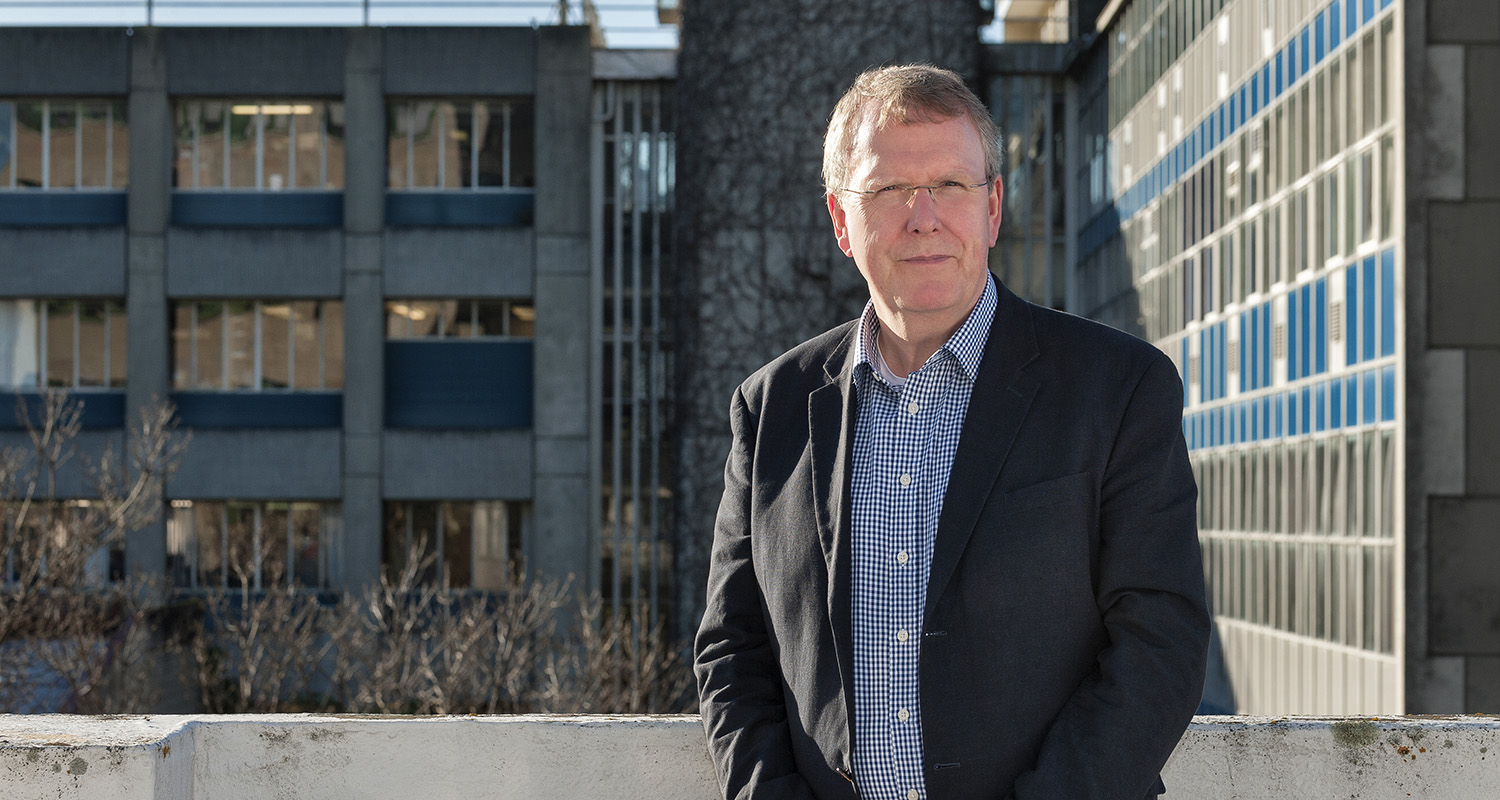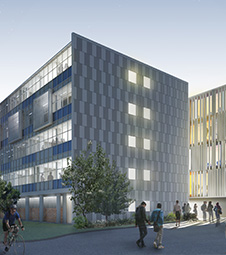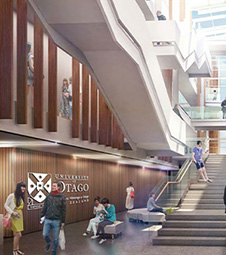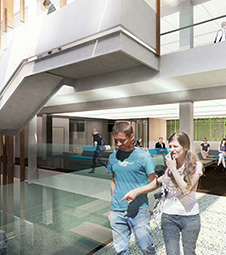
Dental developments
A world top-10 ranking, a major Dental School redevelopment and the prospect of an outreach clinic in Auckland: Otago's new Dean of the Faculty of Dentistry, Professor Paul Brunton, is having a great first year.
A little over six-months after taking up the post of Dean of the University of Otago's Faculty of Dentistry, Professor Paul Brunton was forced to revise his five-year strategic plan.
But he's not complaining.
That's because a key strategic goal he'd planned for the faculty – to secure a place for Otago among the top 20 dental schools internationally – was happily mooted in April when Otago's dentistry programme was ranked eighth worldwide in the QS World University Rankings by subject, becoming the first subject taught at a New Zealand university to ever feature in the world's top 10.
“It's a fantastic endorsement,” says Brunton. “We know that Otago dentistry is a world leader, but because this is the first time QS ranked dentistry as a subject area, no one really knew what to expect.”
More than just welcome kudos, the ranking by the prestigious independent agency will be instrumental in helping New Zealand's only dental school to continue to attract the best and brightest students and staff. It will also help to raise the profile of the many branches of dental science as central to health care – another part of Brunton's vision for the dental school.
The timing, of course, could not be better as the Dental School embarks on a four-year, $100-million plus upgrade to its facilities, increasing both capacity and expertise. Enrolment will likely grow to 100 students per year (from 85 at present) by 2018 when the refurbishments are expected to be completed.
“This is a huge opportunity. Otago is being visionary – creating a state-of-the-art facility, a centre for excellence in oral health for all of New Zealand – and beyond,” Brunton says.
“Our patients and students will be the first to benefit, but so too will our graduates and the dental profession, as the Dental School will improve and expand postgraduate training, continuing education and professional services.”
The new facility will boast new teaching, research, laboratory and clinical facilities, and provide modern equipment including 218 new dental chairs – 66 more than at present – that will enable the Dental School to improve the quality of instruction to its 600-plus undergraduate and graduate students.
Another new initiative that will further improve the quality of instruction and enhance the Dental School's community outreach is a proposed University of Otago dental clinic based in Auckland.
“Our plan is to establish a 30-chair clinic in a south Auckland location,” says Brunton, who is currently working with the Counties -Manukau District Health Board to secure the right space for the clinic.
“This clinic will help make oral health-care services available in an area that needs our support. Otago is the only dental school in New Zealand and it's important for us to have a greater presence in the North Island, to move towards being a national centre of excellence for oral health.”
While the Auckland clinic will provide much needed oral health-care services to the south Auckland community, it also creates valuable, new training opportunities for dental students. At different points during their degree programmes, undergraduate and postgraduate dental students will have the opportunity to travel from Dunedin to undertake placements at the clinic.
“Our students will get the chance to work with a more diverse population in south Auckland and treat patients with different oral health-care needs than they might encounter at the clinic here on the Dunedin campus,” Brunton explains.
“It is invaluable experience, not only from a clinical perspective, but from a professional development point-of-view as well, because students will experience working in a new environment, immersed in the cultural diversity found in larger centres such as Auckland.”
In the future, the facility will also be used to deliver continuing professional development and continuing medical education training to the dental professional in the North Island and further afield.
The $100-million plus investment in the expansion of the Dental School, the positive buzz generated by the QS rankings and the proposed new Auckland clinic combine to help raise the profile of Otago's dental programmes in the broader community and are a solid platform on which to continue to promote oral health as an important part of overall health.
“Oral health is fundamental to good health,” Brunton says. “We have the opportunity to be more visible, more vocal in promoting the important role we play in keeping our communities strong and healthy.”
Brunton, who in addition to his administrative duties, continues to teach and lead clinics, is a strong proponent of embracing new and emerging technologies in administration, teaching and research, and in the practice of dentistry. He's also an advocate and practitioner of translational research – a research model that closely translates bench science into applications, which, when substantiated by clinical research, can lead to improved treatments and outcomes for patients.
“Dentistry is changing at a rapid pace because of technology,” he says. “New materials for restorative dentistry, new techniques for treating patients with special needs, digital patient records, 3-D printing technologies – these all have applications in the dental sciences. The new Dental School facilities mean that Otago can – and will – be a leader in the application of new technologies and our graduates will be among the best qualified practitioners in the world.”
Special needs dentistry is an area where Brunton would like to see Otago increase its expertise.
“We're living longer, people are keeping their teeth longer, so we are treating more patients with complicated medical histories – with diabetes and heart disease, patients with dementia or young people with anxiety disorders. The skills and expertise required to treat these patients is a specialty in itself and an area where we can improve,” he explains.
Brunton (54) took up his appointment in November 2014, joining Otago from the University of Leeds' School of Dentistry where he was Director of Student Education and a Professor of Restorative Dentistry.
Originally from Cheshire, Brunton graduated from the Leeds School of Dentistry in 1984, and obtained an MSc in restorative dentistry in 1992 and a PhD in 1996, both from the University of Manchester.
He is the past president of the British Society of Restorative Dentistry and is on the editorial board of the Journal of Dentistry and Operative Dentistry. He has published more than 70 journal articles and written four textbooks on restorative dentistry.
Brunton counts a more favourable climate and trademark Kiwi friendliness among the positive aspects of relocating to Dunedin. On the downside: having to relinquish season tickets to his beloved Manchester United football club.
“That was a tough day,” he says with a grimace.
Story: Moira Finn | Photo: Alan DoveArchitect's vision of the redeveloped Dental School, showing the Walsh Building and the new clinical building to be constructed behind it, and the atrium that will connect the two buildings.
Capital plans
The extensive redevelopment of the Dental School and its facilities was part of a $200 million capital development programme announced by the University earlier this year, developments that will stand the University, its staff and students in good stead for the coming decades.
This includes the construction of a new 7970 square metre clinical building behind the existing Walsh (Dental School) building. It will house clinical services including radiography, oral surgery, paediatric dentistry, undergraduate clinics and orthodontics. In total, there will be 218 new dental chairs, 66 more than the existing facility.
The Walsh building will be refurbished to house laboratories for research, academic offices, student support and teaching spaces. A new 1425 square metre atrium will link the two buildings.
While the new building will have its own “look”, University Property Services Director Barry MacKay says that, in terms of size and scale, it will reflect the heritage and architecture of the 1961 post-modernist Walsh building, listed as a Category 1 historic place.
The iconic heritage-listed glass-curtain façade will be replaced with a replica that meets current weather-proofing and technological standards. The mosaic north wall will be strengthened and renovated.
The capital development programme also includes a major redevelopment of the 45-year-old Science building. This will include recladding, new windows and roof, and architectural restyling to soften its current “concrete-box-like” appearance. Science laboratories will be remodelled and refurbished to the highest current standards, a new “super lab” will be established on the ground floor, as well as more PC1 and PC2 laboratory facilities.
Work on the Science building is scheduled to begin this month (September) and on the Dental School in November.


